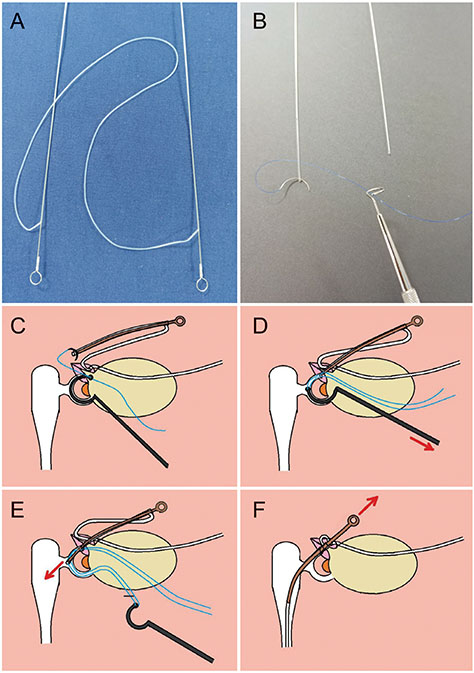Korean J Ophthalmol.
2019 Dec;33(6):569-570. 10.3341/kjo.2019.0070.
Bicanalicular Intubation to Repair Canalicular Laceration Guided by 6-0 Prolene with Pigtail Probe
- Affiliations
-
- 1HanGil Eye Hospital, Incheon, Korea. hapto@daum.net
- 2Department of Ophthalmology, Catholic Kwandong University College of Medicine, Gangneung, Korea.
- KMID: 2465137
- DOI: http://doi.org/10.3341/kjo.2019.0070
Abstract
- No abstract available.
Figure
Reference
-
1. Liu B, Li Y, Long C, et al. Novel air-injection technique to locate the medial cut end of lacerated canaliculus. Br J Ophthalmol. 2013; 97:1508–1509.2. Jordan DR, Gilberg S, Mawn LA. The round-tipped, eyed pigtail probe for canalicular intubation: a review of 228 patients. Ophthalmic Plast Reconstr Surg. 2008; 24:176–180.3. Liang X, Lin Y, Wang Z, et al. A modified bicanalicular intubation procedure to repair canalicular lacerations using silicone tubes. Eye (Lond). 2012; 26:1542–1547.4. Chu YC, Wu SY, Tsai YJ, et al. Early versus late canalicular laceration repair outcomes. Am J Ophthalmol. 2017; 182:155–159.5. Tsai MJ, Lin IW, Lee SS, Lai CS. Stitch guide technique for bicanalicular nasal intubation in single canalicular laceration reconstruction. Kaohsiung J Med Sci. 2018; 34:529–534.
- Full Text Links
- Actions
-
Cited
- CITED
-
- Close
- Share
- Similar articles
-
- Simple Method of Silicone Tube Intubation with Pigtail Probe and Maintenance for Lacrimal Canalicular Repair
- Bicanalicular Silicone Intubation of Canalicular Laceration
- Clinical Experience of Monocanaliculonasal Stent in Canalicular Laceration
- The Effect of Delayed Canaliculoplasty to Canalicular
- A Clinical Study on Silicone Intubation for Canalicular Laceration


